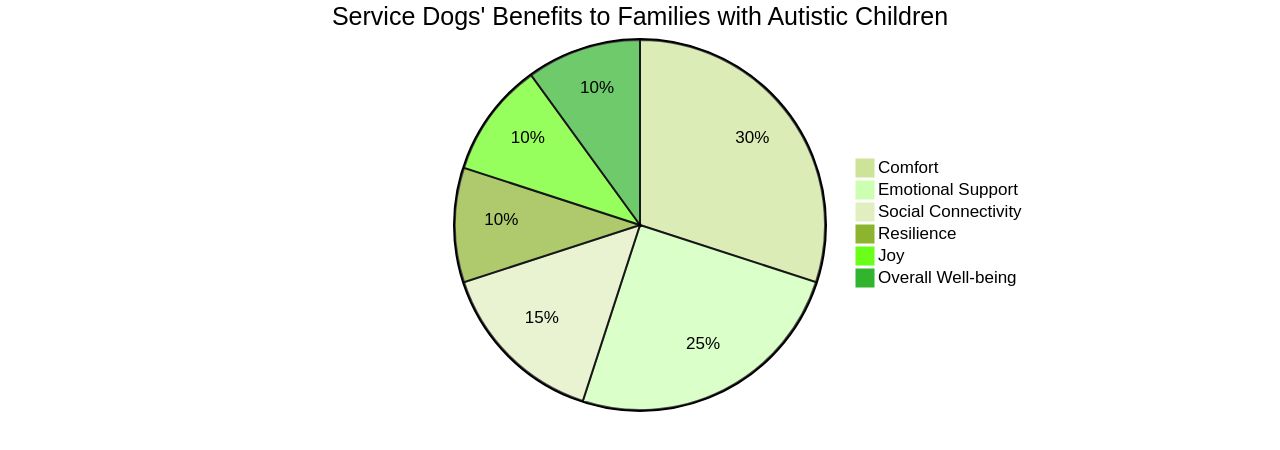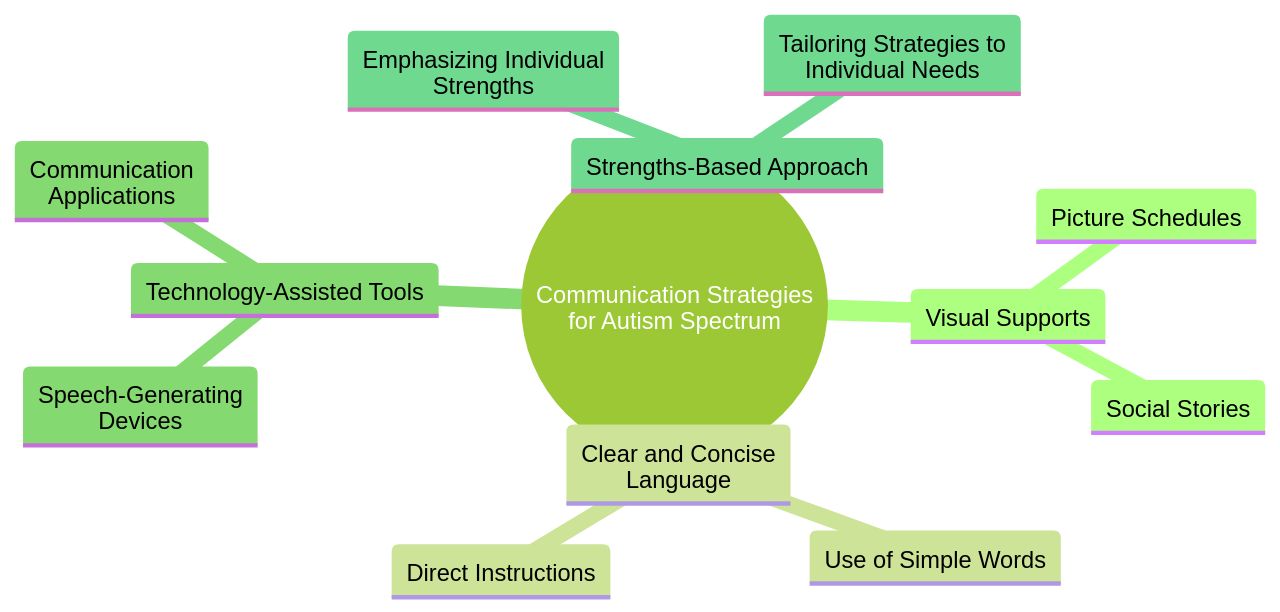Introduction
Autism Spectrum Disorder (ASD), also known as Level 1 Autism, presents unique challenges in social interaction and communication. However, recent research has shown that service dogs can have a profound impact on children with autism and their families. These dogs serve as a calming presence, enhancing family resilience and emotional well-being.
They are not just pets; they are integral family members that foster improved interactions and provide joy. This article explores the benefits of service dogs for children with autism, the importance of considering the whole family unit, effective communication strategies, creating a structured environment, and supporting social skills development. By understanding and implementing these strategies, parents can navigate the challenges of Level 1 Autism and ensure the well-being of their children.
Understanding Level 1 Autism
Autism Spectrum Disorder (ASD), or Level 1 Autism, involves unique challenges in social interaction and communication, coupled with certain repetitive behaviors. However, recent studies have shed light on the profound impact that service dogs can have on children with autism and their families.
Research conducted by Dr. Maggie O'Haire's lab, published in Frontiers of Psychiatry, reveals that service dogs serve as a calming presence, significantly enhancing family resilience and emotional well-being. These dogs are not just pets; they are viewed as integral family members, contributing to a more robust family unit by fostering improved interactions and providing joy.
The research underscores the importance of considering the entire family when assessing the benefits of service dogs for children with autism. Innovative studies from the OHAIRE Group at the University of Arizona College of Veterinary Medicine corroborate these findings, indicating that service dogs not only aid in social connection enhancement for the entire family but also reduce the stigma and judgment they face.
Moreover, it's vital to acknowledge that the welfare of the service dogs is equally important. A study examining stress biomarkers in therapy dogs revealed no significant stress when working with autistic children, emphasizing the mutually beneficial nature of the human-animal bond. This discovery is crucial as it ensures that the therapy sessions are as favorable for the dogs as they are for the children. Statistics reveal that boys are approximately four times more likely to be diagnosed with autism than girls, with a current prevalence of 1 in 36 children, which has risen significantly from 1 in 125 in 2004. Early diagnosis by age 4 increases the likelihood of receiving essential services fiftyfold, highlighting the importance of early detection and intervention.
Recognizing Traits and Behaviors
Understanding the presence of autism in children has been further enriched by the inclusion of service dogs as part of the family dynamic. Research has highlighted the multifaceted role these dogs play.
They are not only a source of comfort for the child with autism but also act as catalysts for social connectivity and emotional support for the entire family. The impact of these canine companions extends beyond the individual, fostering resilience and joy in the family as a whole.
Studies, such as the one conducted by the OHAIRE Group and published in Frontiers of Psychiatry, underscore the importance of considering the whole family unit when evaluating the benefits of service dogs. The study's qualitative analysis revealed that service dogs are regarded as integral family members and contribute significantly to the family's overall well-being. Additionally, research indicates that adults diagnosed with autism are increasingly recognized as benefiting from the support of service dogs, reflecting a growing societal openness to discussing mental health issues and the need for such support systems. With the demand for autism assistance dogs rising, organizations are facing greater pressures, highlighting the essential role these dogs play in enhancing the lives of individuals with autism and their families.

Effective Communication Strategies
To facilitate meaningful communication with individuals on the autism spectrum, particularly those with Level 1 Autism, it is crucial to integrate strategies that leverage their unique strengths and accommodate their challenges. The use of visual supports, such as picture schedules and social stories, can provide clarity and structure, aiding in the understanding of social cues and expectations.
Clear and concise language is essential, avoiding ambiguity and fostering a more inclusive conversation. Additionally, embracing technology-assisted tools, including speech-generating devices and communication applications, can bridge the gap for non-verbal individuals or those with speech difficulties, empowering them to express themselves and engage with their community.
The strengths-based approach, emphasizing the exceptional memory, visual thinking, and attention to detail often found in autistic individuals, can be instrumental in supporting their communication needs. This perspective aligns with the insights of social worker Bertha Reynolds, who advocated for recognizing the capabilities rather than the deficits of those with mental health challenges.
By focusing on these innate abilities, caregivers and professionals can cultivate trust and understanding, enabling autistic individuals to thrive in social interactions and beyond. Research highlights the importance of such inclusive strategies, as many autistic adults report being turned away by practitioners due to a lack of understanding of their needs. With a little training and a willingness to adapt, caregivers can ensure that autistic individuals are not only heard but also valued for their unique perspectives. As Dr. Tim Buie emphasizes, the clinician-caregiver partnership is vital to successful health care experiences, and by extension, to all forms of communication and support for the autistic community.

Creating a Structured Environment
For children on the autism spectrum, particularly those with Level 1 Autism, consistency and predictability are key to fostering a sense of security and aiding in their development. Establishing structured routines and clear expectations can significantly impact their daily functioning.
Visual supports act as an invaluable tool in creating an environment that is both understandable and manageable for these individuals. By integrating visual schedules, charts, and other aids, caregivers can help mitigate the anxiety and stress associated with unpredictability, which can often be overwhelming.
These strategies not only support the child's need for structure but also promote independence and confidence in navigating their world. The benefits extend to the entire family unit, where the positive effects of a well-organized environment can alleviate some of the ecological adversities commonly faced, such as caregiver stress and marital strain. This approach aligns with the Developmental-Ecological model, which emphasizes the profound influence of daily interactions and routines within the family on the child's overall well-being. It is a testament to the adaptability and resilience of these families that, despite the challenges, they strive to create nurturing spaces that cater to the unique needs of their autistic children.

Supporting Social Skills Development
Encouraging a child's social skills is pivotal, especially for those with autism who may face unique challenges in social communication. A study on the PEERS® for Preschoolers program revealed that parents play a crucial role in reinforcing social skills intervention strategies outside of formal sessions.
By implementing these strategies, children showed marked improvements in social competence and confidence. Parents, in turn, experienced a reduction in stress and an increase in empowerment and support.
Dr. Hannah Schertz emphasizes the importance of early intervention and parental mediation for fostering social communication in very young autistic children. She notes that preverbal social communication, particularly joint attention, is related to later language development and is a core area of focus in her research.
This approach leverages the close bond between parents and children to create a nurturing environment for social learning. Furthermore, recent research indicates that social interaction enhances learning in autistic adults as well, underscoring the significance of social skills across the lifespan. With April being Autism Awareness Month, it's important to recognize the strengths of individuals with autism, such as exceptional memory and attention to detail. A strengths-based approach can help tap into these assets, empowering children with autism to achieve their full potential and become integral members of society. As we raise awareness and reduce stigma, it's essential to involve autistic individuals, organizations, and employers in a national campaign to celebrate their contributions and successes.
Conclusion
In conclusion, service dogs have a profound impact on children with Level 1 Autism and their families. These dogs serve as calming presences, enhancing family resilience and well-being. By considering the whole family unit and prioritizing the welfare of the dogs themselves, we can foster improved interactions and reduce stigma.
Effective communication strategies, such as visual supports and technology-assisted tools, bridge communication gaps for individuals with autism. Creating a structured environment with visual supports promotes security and independence for children with Level 1 Autism, benefiting both the child and the entire family. Supporting social skills development is pivotal for children with autism.
Parents play a crucial role in reinforcing intervention strategies outside of formal sessions, leading to improvements in social competence and confidence. Early intervention and parental mediation foster social communication in young autistic children. During Autism Awareness Month, it is important to recognize the strengths of individuals with autism and involve them in celebrating their contributions.
By embracing a strengths-based approach and reducing stigma, we empower children with autism to achieve their full potential. By understanding and implementing these strategies, parents can confidently navigate the challenges of Level 1 Autism. Together, we can ensure the well-being of children with autism by providing guidance, support, and resources that empower families on this journey.




